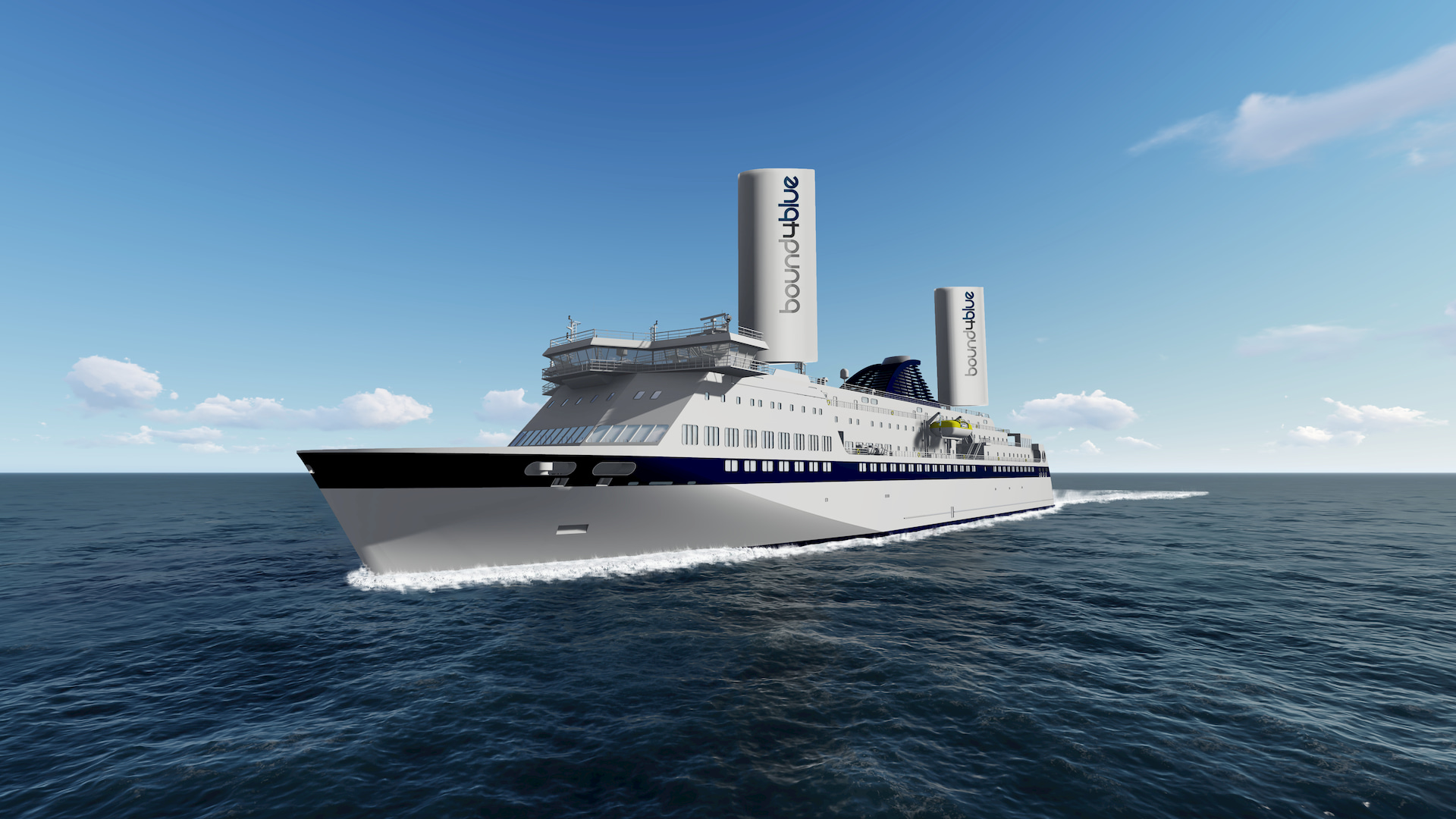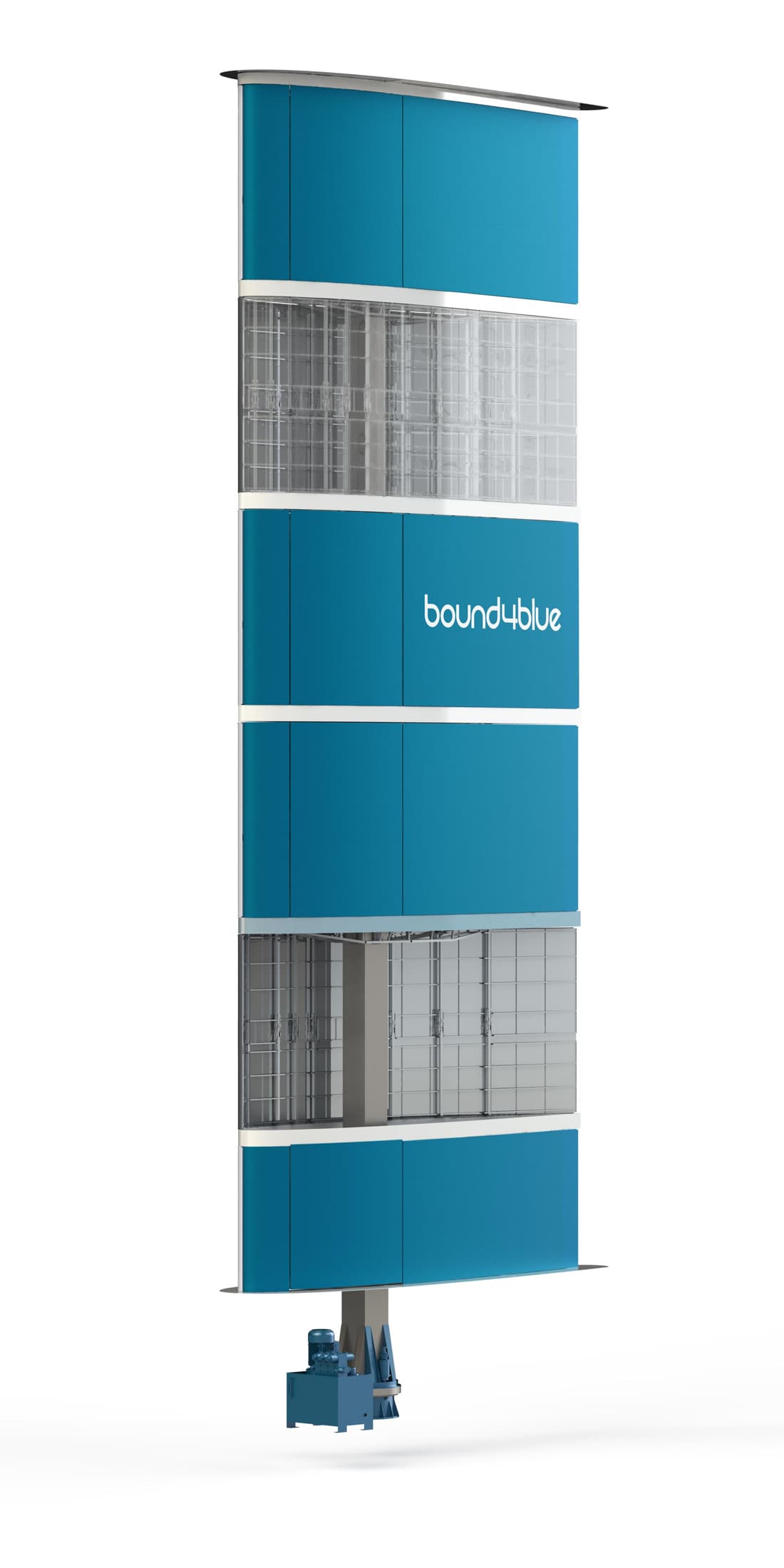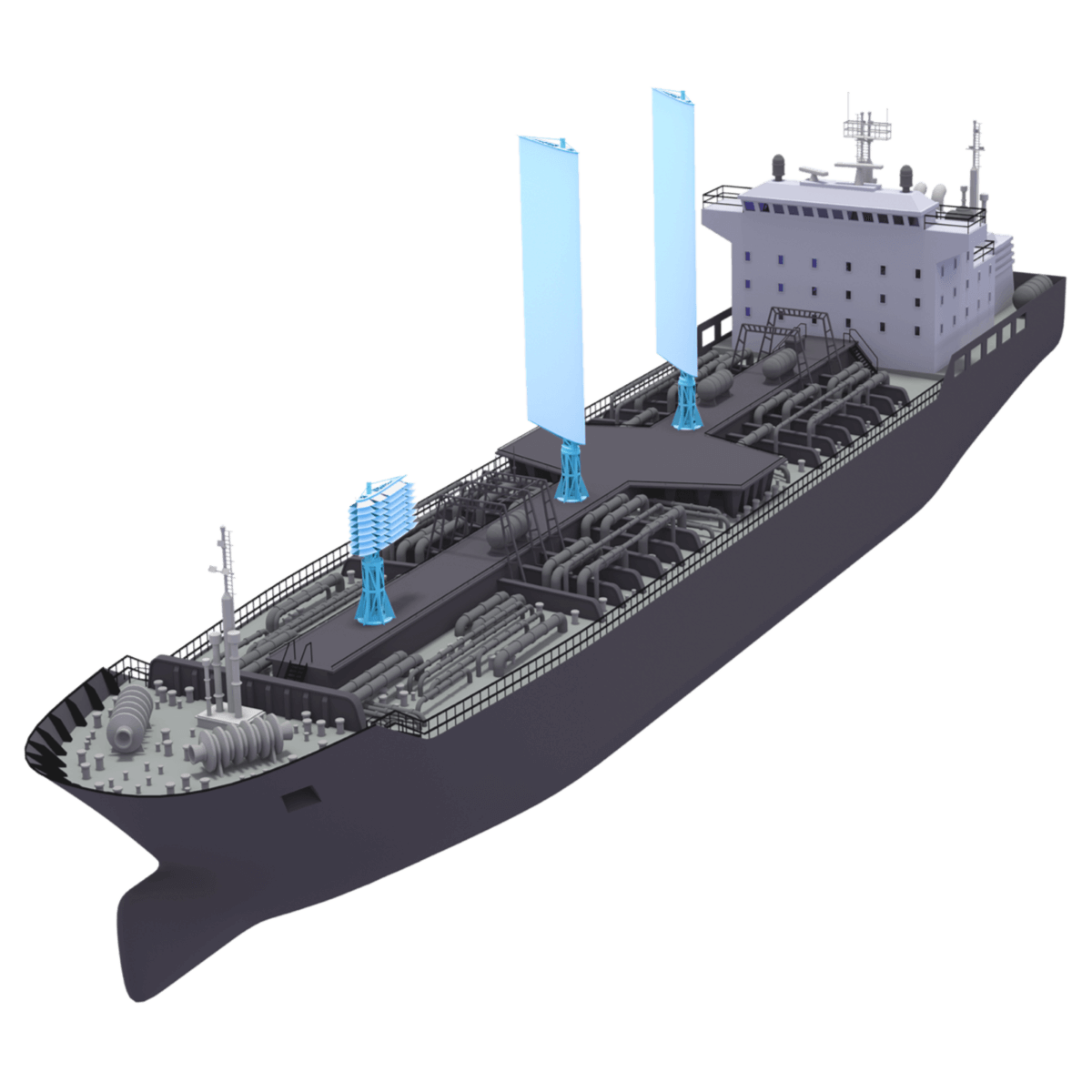bound4blue has been in the headlines for quite some time now. With agencies like Forbes, La Vanguardia, portalportuario, Safety4sea, and many more have already written highly on bound4blue. It is high time we talk about it here. bound4blue is on news everywhere for its Complementary Propulsion System. It produces effective thrust from the sea winds. This technology promises us a great future.
A quick note on bound4blue -
Maritime transport is responsible for transporting about 90% of worldwide cargo by means of a fleet of quite
90,000
vessels, which is renewed every year with a set of 2,700 new vessels. These vessels consume between 4 -110
tons of
fuel per day, which is between 25% and 85% of their operating costs, and produce an unsustainable amount of
pollutant emissions.
bound4blue has developed a foldable and autonomous wing-sail system which can be integrated onto a
good range
of vessels.

The system is a complementary propulsion system and produces effective thrust from existing winds which reduces the engine power required. This in turn reduces fuel consumption and pollutant emissions by 40%. bound4blue comes with a payback period of under 5 years.
The Working
(note: All the pictures/videos are taken from- https://bound4blue.com/en/. We don’t own any of the media presented here. Fair use of the media for News, Reporting and Educational Purpose only)
The Rigid Sail-
Wind by far is the cheapest, most powerful, and cleanest source of energy. With bound4blue’s system, the ships can use wind as an energy source to scale back fuel consumption costs, and pollutant emission levels.
SYSTEM COMPONENTS

- AUTONOMOUS CONTROL SYSTEM The autonomous control system is in charge of positioning the wing-sail to the most appropriate position and folding it in case of harsh weather and port operations. It comes with manual mode as well
- RIBS The ribs are responsible for generating the shape of the airfoil and transmitting the aerodynamic loads to the mast
- SKIN The skin is responsible for generating the external surface of the wing-sail
- TELESCOPIC MAST The telescopic mast is the core piece of the wing-sail structure. It is responsible for holding shear stress and bending moment generated by aerodynamic and inertial loads. Moreover, it provides the folding and rotation capability
- ROTATION SYSTEM The rotation system is extremely similar to those used in cranes, where the vertical rotation axis is aligned with the mast
- HYDRAULIC SYSTEM The mechanism provides power to the folding and rotation systems.
An Overview-
What makes bound4blue different?
The technology may be a passive system, this suggests that it doesn't require energy to get thrust and thereby save fuel, while other wind-assisted systems require approximately 15% of the facility that they generate. Moreover, the system is foldable, so it doesn't interfere with the ship's operations, and it operates autonomously, so no extra crew or training is required. bound4blue always adapts it to the precise characteristics of every vessel, achieving savings of 30% on the average, at a competitive cost, and with minimum maintenance.
bound4blue is a project co-financed by the European Commission, ESA (European Space Agency, ENISA (Ministry of Industry, Energy and Tourism, Government of Spain), the European Investment Fund, the Generalitat of Catalonia, the Government of Cantabria, Sodercan, the European Fund of Regional Development, Climate KIC and the European Union.
What problem does bound4blue solve?
Shipowners and ship operators face two major challenges. First, the high fuel consumption that represents about 60% of its operating costs. Secondly, latest international regulations which will force the world to use a less pollutant but costlier fuel. bound4blue's technology is the perfect solution, since it reduces the fuel consumption and pollutant emissions by a mean of 30% ensuring a payback of but 5 years.

How does the system work?
bound4blue's wing-sails consists of a telescopic and retractable mast, on which a rib structure is mounted, additionally to holding the outer skin. Likewise, the system works, thanks to the autonomous system that ensures its rotation and foldability without the necessity of additional crew or training.
The type of vessels that can implement this technology-
Almost every sort of vessel: tankers, bulk carriers, general cargo, Ro-Ro, passenger, gas vessels (except technology Moss), and fishing vessels.
José Miguel Bermúdez (CEO), Cristina Aleixendri (COO) and David Ferrer (CTO) are the three initial founders.
If you've been tagging along this this far, then this video might be
just what
you
needed
bound4blue will make it happen - 'a sustainable future'. I is functioning towards alternative
application of the wingsail technology, to style a ship
propelled by these wingsails, capable of manufacturing hydrogen and oxygen by means of the electrolysis of
seawater in a clean and cost-efficient way. The green hydrogen generation system here introduced is that the
key to
meet the fast-growing demand of energy that the planet is currently facing. Hydrogen is that the most
abundant
element within the universe and offers a sustainable and efficient alternative to fuel for energy
production.
Now, check out their official website - bound4blue.
You'll love it!
